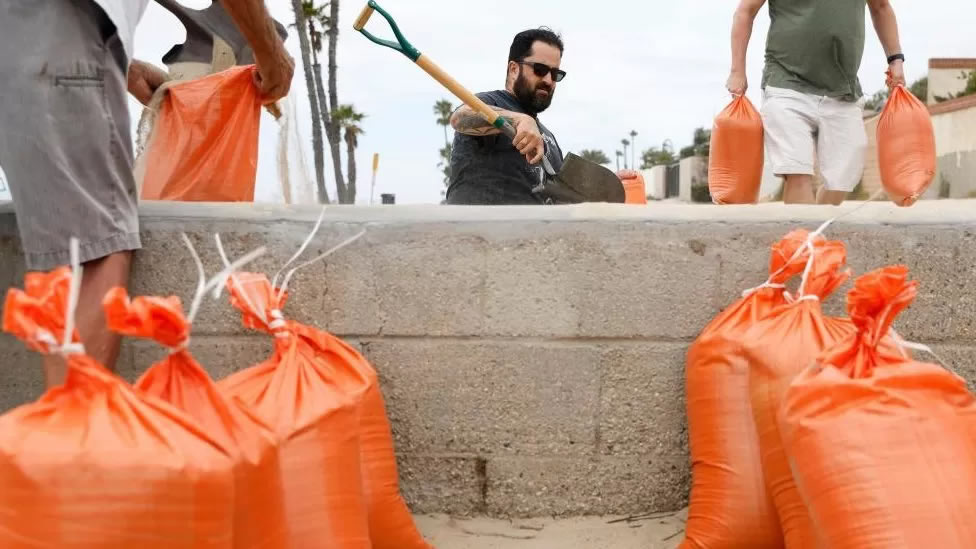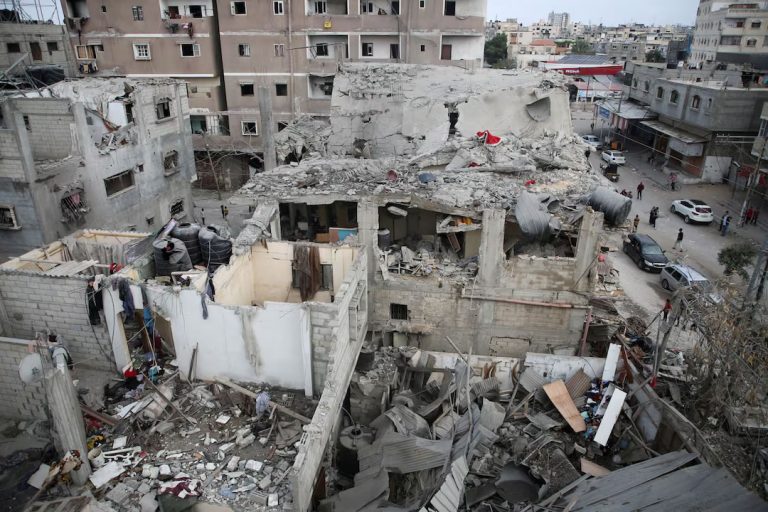With winds of 85 mph (140 km/h), it has been downgraded to a Category 1 storm.
Heavy rain lashed parts of Mexico’s Baja California peninsula and the south-western US overnight.
One man died after being swept away while crossing a stream in Baja California, an official said.
The man was travelling in a car with his children, aged 7, 15 and 22, and a woman, who all survived, local media reported.
Hilary is expected to weaken further to a tropical storm before it reaches southern California. It would be the first tropical storm to hit the US state in more than 80 years.
In its latest update at 06:00 GMT on Sunday, the US National Hurricane Center said the hurricane was roughly 90 miles (145km) south of Baja California’s westernmost point of Punta Eugenia.
Hilary’s centre will “move close to the west-central coast of the Baja California Peninsula” on Sunday morning and will then move across southern California on Sunday afternoon, the NHC said.
“Hilary appears to be weakening quickly,” John Cangialosi, a senior hurricane specialist at the NHC, was quoted as saying by the Associated Press news agency on Saturday.
“The eye is filling and the cloud tops in the eyewall and rainbands have been warming during the past several hours,” he adds.
Hilary was earlier a powerful Category 3 storm with winds up to 130mph.
Rainfall could reach 10in (25cm) in some areas of southern California and southern Nevada, the NHC says. “Dangerous to catastrophic flooding is expected,” it adds.

In San Diego, the National Weather Service (NWS) earlier issued a warning for the “high potential” of flash flooding. Nearly 26 million people in the south-western US were under flood watch.
On Friday, US President Joe Biden said that the Federal Emergency Management Agency (Fema) had “pre-positioned personnel and supplies in the region”.
“I urge everyone in the path of the storm to take precautions and listen to the guidance from state and local officials,” he said.
Parts of Mexico are under a tropical storm watch and its government has placed 18,000 soldiers on standby to assist in rescue efforts.
As the storm bears down, Major League Baseball has rescheduled three games in southern California, while SpaceX has delayed the launch of a rocket from its base on the central California coast until at least Monday.
The National Park Service also closed Joshua Tree National Park and Mojave National Preserve, both in California, to prevent visitors from being stranded in the event of flooding.
Local officials in cities across the region, including in Arizona, are offering sandbags to residents seeking to safeguard their properties against potential floodwaters.
Hurricanes and tropical storms are somewhat common in Mexico. But the last time a tropical storm made landfall in southern California was in Long Beach in 1939.
Experts say the abnormal weather events plaguing the US – and several areas across the globe – are being influenced by human-caused climate change.
In the wake of the hottest month on record, July 2023, according to Nasa, the deadliest wildfire in modern US history spread across Hawaii on 8 August, killing at least 111 people.
The damage was escalated by hurricane winds passing through the area.



















+ There are no comments
Add yours